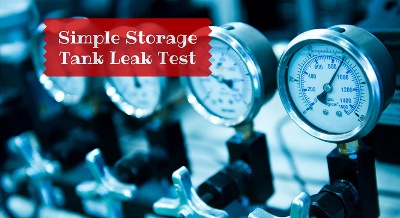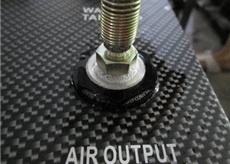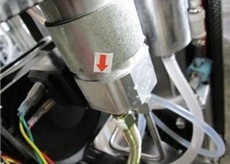 Imagine you import 200 air compressors made in a factory overseas. Since you take care in checking a sample of each order you import before distribution, you unpack a few units for a closer inspection. You turn on the first compressor and let it run until the pressure gauge shows 5,000 PSI before shutting it off. What you find is that the compressor is leaking air – a lot of air and fast. The needle drops below 4,000 PSI after just a few minutes. You find that more than a third of the units in your order are affected by similar leaks. And unless you want to see a lot of returns, these unsellable compressors will need serious repairs before they can reach retail stores.
Imagine you import 200 air compressors made in a factory overseas. Since you take care in checking a sample of each order you import before distribution, you unpack a few units for a closer inspection. You turn on the first compressor and let it run until the pressure gauge shows 5,000 PSI before shutting it off. What you find is that the compressor is leaking air – a lot of air and fast. The needle drops below 4,000 PSI after just a few minutes. You find that more than a third of the units in your order are affected by similar leaks. And unless you want to see a lot of returns, these unsellable compressors will need serious repairs before they can reach retail stores.
Leaks are infamous for being some of the most troublesome and expensive repairs anyone can come across with storage tanks, regardless of whether a tank stores water, gas or fuel. Tanks need to go through a series of on-site tests to check for leaks and other defects before they leave the factory that manufactures them.
There are countless devices and sensors that can be used to help spot leaks in a component. There are methods involving high frequency sound and others that use a trace gas to help pinpoint the location of the leakage. But the equipment needed for these tests can be very expensive, and few factories will invest in the added cost.
Luckily, there is a simple test commonly performed by professional quality control inspectors that you can conduct to ensure the structure of your storage tank is not compromised prior to shipping and installation. Stick around for the most simple, yet effective, way to test for leaks in storage tanks.
The Soapy Water Storage Tank Leak Test
The soapy water test is simple and can be conducted by a QC team even in the most unprepared of factories. This storage tank leak test is used to find holes or faults not only in the tanks themselves, but also other components ho lding any substance under pressure, like hoses, gaskets and others.
lding any substance under pressure, like hoses, gaskets and others.
1. Set the storage tank
Use a new tank, tubing, or any other component you may be testing and place it alongside a flat surface. You’ll need to have easy viewing access to the tank and any other components you’re testing.
2. Seal the storage tank
Seal every opening around the tank except for the inlet.
3. Add compressed air
Use that one opening to pump compressed air into the tank, with a recommended pressure of no more than 5 PSI.
4. Cover the tank in soapy water
While compressed air is being introduced into the tank, use a sponge or sprayer to cover the tank in a solution that is 1 part standard detergent and 3 parts water.
5. Inspect the tank
Inspect the tank for the presence of bubbles, which would be a clear indication of a leak. Bubbles are made from the air blowing out through soapy water.  Even the smallest leak creates this effect which is generally easy to spot.
Even the smallest leak creates this effect which is generally easy to spot.
6. Make corrective repairs
If a leak is detected, take proper documentation and proceed with repairs before the tank is shipped or installed. Make sure the factory reworks the tanks to correct the leaks if you discover any during product inspection. It’s typically much less expensive for the factory to make repairs before the goods are shipped, rather than you having to arrange repairs later.
"It’s typically much less expensive for the factory to make repairs before the goods are shipped"Conclusion
There are more sophisticated tests and techniques available for checking leaks in storage tanks. But the soapy water test stands alone in its simplicity, low equipment cost, and overall effectiveness. This storage tank leak test also covers the greatest surface area at once. The test method offers fast detection of the exact location of a leak and allows you to spot any other leaks at the same time.
"The soapy water test stands alone in its simplicity, low equipment cost, and overall effectiveness." Make sure leak testing is performed on any tanks you import prior to shipping.







